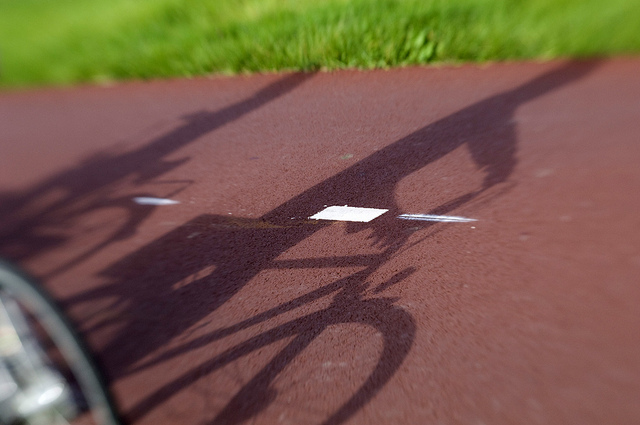
Obesity to strain struggling European healthcare system. Solutions in sight?
Investing in health is the latest buzzword public health officials are using these days. Cuts are needed—but where? “If the EU and member states cut funding on preventable diseases, many will suffer and we’ll face much bigger accrued costs” said ECF policy officer, Dr. Randy Rzewnicki. Cardiovascular diseases associated with obesity are preventable diseases and this past week the High Level Group on Nutrition and Physical Activity met with the EU Platform for action on diet, physical activity and health to address these issues.ECF was in attendance and has been a participating member of the EU Platform for many years, arguing that active mobility like bike to work and bike to school offer solutions to health and transport problems in the EU.
What came out of this room packed with representatives from all member states were disheartening statistics veiled with optimism. The current obesity situation in the EU holds significant health and economic problems for future European generations. Dr. João Breda from the World Health Organization addressed the staggering current obesity levels in Europe. In every European country over 50% are overweight and more than 18% are obese. While the aggregate data trend thus far has pointed out that these numbers may be stabilizing for men and women, who have a slightly lower obesity rate than males, the accuracy is questionable. But, even stabilization is not enough. “If we only meet the global target [no more increase in obesity]” said Breda, “we will still have a generation of obese people.”
Dr. Breda warned about the alarming continuing rise in childhood obesity. In 2008 one-in-four European children were obese or overweight and it is projected to rise to one-in-three. Newly appointed Maltese Commissioner Tonio Borg stressed that, “the upward trend of childhood obesity threatens to overwhelm the health care systems.”
In times of austerity, these preventable health costs from weight related diseases need to be reduced. Susanne Løgstrup from the European Heart Network reported that “the current cost of cancer and cardiovascular disease in the EU is €196 billion.” Efforts to reduce obesity have been made but the absence of functional models and sufficient data have made developing accurate and successful action difficult.
However, like a beacon in the night, this past week the WHO unveiled NOPA II; a revamped version of their Nutrition, obesity and physical activity database. The models that NOPA II generates are considered by Dr. Breda to be some of the best to be seen he refers to the new system as, “a Ferrari that we’re still learning how to drive.” Excited and positive, Director-General Paula TestoriCoggi said, “This is what we need to make good policy!” and SANCO is considering funding NOPA further.
Such advancement could not have come sooner. DG SANCO commissioned an external report on the progress made by the EU Platform on Diet, Physical Activity and Health. The findings were less than spectacular. The report found progress to be mostly “small steps but no major breakthroughs. There have been no fundamental changes and no radical shifts.” The few successes have been getting obesity on the Commission’s agenda and increasing networking. The report recommends that SANCO engage more with NOPA because the benefits are clear and large. This is especially the case for urban transport an area that ECF has supported and campaigned for vehemently.
The ECF is an advocate for physical activity and our participation in the platform has led to many network formations. Our most recent partnership is with ISCA (International Sport and Culture Association) and their NowWeMove Campaign.This partnership was granted €1 million to get 100 million more Europeans active by 2020. The ECF will encourage cycling groups, cities and cycling businesses to use the NowWeMove Campaign all year round to show the importance of daily and recreational cycling to physical activity and public health.
This partnership is crucial. The physical activity statistics presented by Dr. Breda from the WHO at the meeting are low, shockingly low. 63% of Europeans are not meeting the daily minimum of 30 minutes moderate physical activity and 20% of that number represents highly inactive individuals. This means that only 37% of Europeans are either meeting or exceeding the daily recommendation. “The minimum could easily be met by daily cycling” said Dr. Randy Rzewnicki. Cycling as a means of urban transport is one of the best options for increasing physical activity and combating obesity.
While the statistics from the WHO presented this week may be upsetting, Commissioner Borg believes that “this trend can be reversed.” If the Commission chooses to increase the profile of physical activity at the Commission level and support the new NOPA II there is hope for fighting obesity in Europe. Dealing with youth obesity in Europe is essential for the future of our healthcare systems. The ECF is working cooperatively on ISCA with the goal of getting 100 million more Europeans active by 2020. “We should not lose heart” said Commissioner Borg and despite the uphill battle ahead of us, as cyclists, we are used to riding up hills.
About the Author
Gregory Markus is a Communications Assistant at ECF. He holds a Masters in European Studies from the University of Amsterdam.
- Log in to post comments
Contact the author
Recent news!
Upcoming events
Contact Us
Avenue des Arts, 7-8
Postal address: Rue de la Charité, 22
1210 Brussels, Belgium











